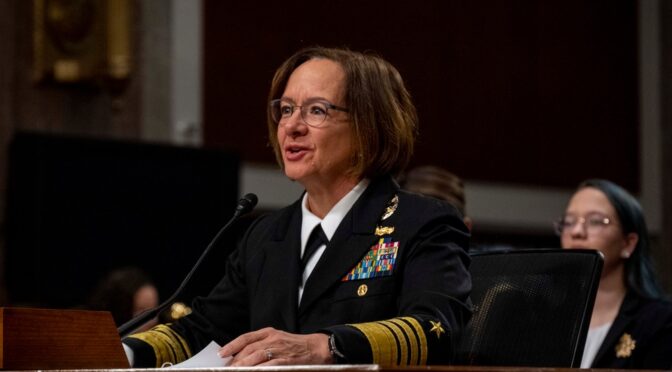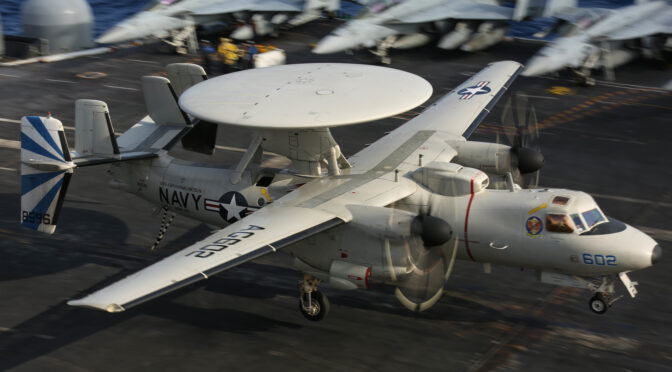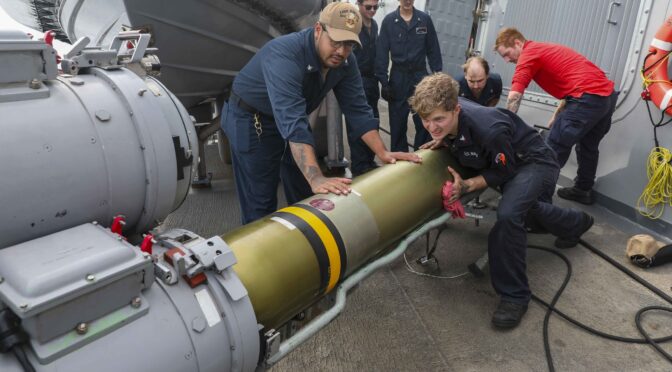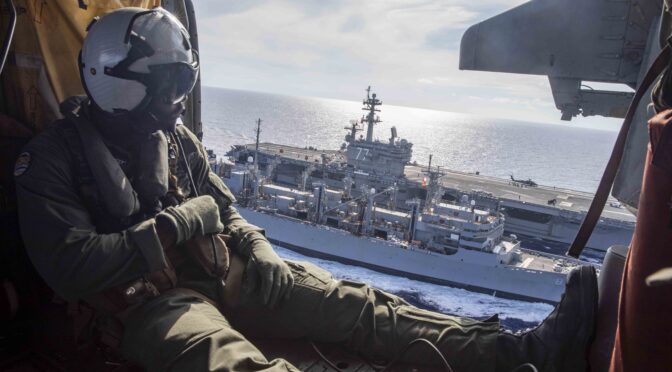By Dmitry Filipoff
For the past two weeks, CIMSEC featured short articles submitted in response to our Call for Notes to the New CNO. In this special series, authors conveyed their thoughts on what they believe are the most pressing issues for the U.S. Navy’s new top leader, Acting Chief of Naval Operations Admiral Lisa Franchetti.
Authors recommended new naval strategies and approaches to force design, as well as specific efforts to manage personnel retention issues. Authors also offered recommendations on how the Navy can become a better learning organization and seize opportunities posed by emerging capabilities. The U.S. Navy’s new leadership is confronting myriad challenges that could affect the Navy’s competitiveness for years to come.
The featured authors are listed below, and we thank them for their excellent contributions. This is an independent CIMSEC initiative and is not produced in partnership with any U.S. Navy organization or entity.
“The United States Navy Needs an Operational Level of War Strategy to Inform Fleet Design,” by Steve Wills
“Admiral Lisa Franchetti should take the initiative to develop a comprehensive, operational level of war maritime strategy that will determine fleet missions, which will subsequently inform a specific fleet size and force design. Forging a stronger connection between warfighting strategy and force design will remain among the most pressing matters for the leadership of the United States Navy.”
“Create a New Doctrine for Applying Learning Strategies to Warfighting Challenges,” by CDR Paul Nickell
“A revised NDP-1 will go beyond teaching warfare principles as an instrument of national power. Indeed, it would provide a timeless model for how to approach complex warfighting challenges with specific learning strategies and campaigns.”
“Focus on Culture for Success in the AI Era,” by Harrison Schramm
“Successful AI culture is a departure from Navy norms. Military culture is based around assured success, but compared to aviation or weaponeering, AI requires far more failure before reaching success.”
“Dusting Off the Z-Gram: Getting Real with Recruiting and Retention,” by Lt. Sam Strauss
“The traditional benefits of naval service – adventure, camaraderie, leadership experience, stable pay, and robust benefits – no longer match the costs associated with a sea-going career. While this may not be the case for every Sailor, personnel numbers indicate a strong correlation. So what do we do?”
“Counter China’s Goal of Displacing American Command of the Sea,” by Robert C. Rubel
“To support its goals, China is creating a navy that it hopes can directly challenge the U.S. Navy for supremacy on the world ocean, something the USSR never aspired to do. The combination of China’s economic and industrial power, and its sweeping global objectives, presents the U.S. with a new and more difficult challenge that previous approaches to security will not properly address.”
“Empowering Division Officers and Enhancing Sailor Stability,” by Lt. Upton Wallace
“These two areas of focus – empowering division officers and enhancing sailor stability – are interconnected. A more empowered division officer will better understand and address the unique needs of their sailors, including their need for stability. More content and stable sailors will be more responsive to their officers, creating a more trusting and effective chain of command.”
“Revamp Force Design for Sea Control and Joint Integration,” by Commanders Andrew “Kramer” Tenbusch and Trevor “Mrs.” Phillips-Levine
“The Navy needs to divorce itself from its affinity of conceiving capability as a function of traditional naval platforms, such as surface combatants or range-hobbled carrier air wings, and pursue a more holistic concept.”
“The Navy Must Rediscover its Roots and Recommit to Small Combatants,” by Victor Sussman
“The Navy must recommit to the vital role of small ships in meeting its obligations. A commitment to smaller combatants offers benefits for naval operations, the supporting industrial base, and for leadership development.”
“Capitalize on Allied Capabilities to Succeed at Sea – A View from Spain,” by Gonzalo Vazquez
“With an increasingly complex strategic environment, and a fleet struggling to meet its many operational requirements, the next CNO must strive to find new ways to capitalize on allied naval capabilities to succeed at sea. Prominent options include strengthening naval cooperation with partners to ensure a permanent presence in all strategically relevant theaters, and bolstering the sharing of naval knowledge among allied naval war colleges.”
“Rebalance the Fleet Toward Being a Truly Expeditionary Navy,” by Anthony Cowden
“Today we have a forward-based navy, not an expeditionary navy. This distinction is important for remaining competitive against modern threats and guiding force design.”
“Organize Campaigns of Learning and Reshape the Defense Analysis Paradigm,” by John Hanley
“Whether it is maintenance and administration, training and education, at-sea exercises, engagement with adversaries and partners (e.g., FONOPS), or creating antifragile naval architectures, if the participants are simply box-checking rather than learning, the effort is falling short. The Navy must be more deliberate about being a learning organization and how it structures its campaigns of learning.”
“Empowering Enlisted Sailors: The Imperative for Expanded Educational Opportunities in the U.S. Navy,” by Petty Officer 2nd Class Richard Rodgers
“In the pursuit of maritime superiority, the U.S. Navy must prioritize the education and empowerment of its enlisted Sailors. These dedicated individuals are the backbone of the U.S. Navy, and their success directly contributes to the U.S. Navy’s overall readiness and effectiveness. By reinforcing and expanding educational opportunities for enlisted Sailors, the U.S. Navy can ensure that they become full, active, and informed participants in the mission.”
“Get Real Get Better about Digital HR for Sailors,” by Artem Sherbinin and Daniel Stefanus
“Consistent errors in their HR experience, often driven by these unreliable digital HR tools, push many Sailors out of the service. Sailors’ digital HR experience is not a quality of service or quality of life issue. Getting HR digital implementation right is a warfighting and readiness imperative.”
“Down Select and Commit To Uncrewed Surface Systems,” by LCDR U.H. (Jack) Rowley (ret.)
“After almost a decade of demonstrating the capabilities of MUSVs, the Navy has been slow to establish programs of record to populate the fleet with these workhorses. The Navy should now shift its efforts from prototyping to serial production, given how these vessels have demonstrated their potential.”
“Man The Fleet and Reduce Sailor Exhaustion,” by Capt. John Cordle (ret.)
“In the end, it comes down to setting firm priorities and making the tradeoffs. The best weapons in the world will fall short if they are manned by overworked and exhausted Sailors.”
“Sailors Matter Most: Incentivize Education and Cultivate Learning Leaders,” by Sean F. X. Barrett, Mie Augier, and William F. Mullen, III
“All members of the sea services must help maintain and hone their intellectual edge. They must be able to out-think and out-learn any opponent, especially in dynamic and rapidly changing situations. This is their greatest advantage, but it is also perishable. If it is neglected due to other priorities, it will atrophy and wither away.”
“Lead the Fight Against Climate Change and Transnational Crime in the Indian Ocean,” by Commander Amila Prasanga, Sri Lankan Navy
“Climate change is transforming the security landscape in the Indian Ocean. It is having a profound impact in fomenting transnational maritime crimes, particularly illegal fishing, human smuggling, drug trafficking, and piracy. Island states are specifically vulnerable to these crimes, which often exploit their maritime boundaries and limited capacity. Recognizing these strategic vulnerabilities and their potential to destabilize the region is paramount.”
“Prototype the Bi-Modal Naval Force,” by Shelley Gallup
“The bi-modal fleet structure includes a combination of small, crewed, and autonomous systems working as a networked flotilla. The crewed LMACCs and uncrewed autonomous surface vessels can be built and armed for much lower costs and greater capability than the cost of building one or two more destroyers or frigates. In this systems view, it is the holistic flotilla network that is the capability, rather than the individual platform.”
“Improve the Culture and Mechanisms of Naval Learning,” by Commander Art Valeri
“A key contributor to unit success includes the intentional creation of organizational and cultural environments conducive to learning. The ability to learn is arguably the main attribute with the potential to produce warfighting victory.”
“Ask the Public for Material Sacrifice to Narrow the Civ-Mil Divide,” by Michael D. Purzycki
“Even the people of a famously tax-averse country like the United States might accept financial sacrifice to help the troops. While today’s Americans do not have to sacrifice to nearly the extent the World War II generation did, direct requests for contribution to the armed services could help revive some of the spirit of America’s greatest military triumph.”
“Be Mindful of JADC2’s Emission Risks,” by Richard Mosier
“The Joint All-Domain Command and Control (JADC2) concept is totally dependent on radiofrequency (RF) communications to connect military assets across the space, air, land, and sea domains. This plethora of RF emissions from U.S. radars, communications systems, data links, and navigation aids presents a lucrative signals intelligence target that could undermine JADC2.”
Dmitry Filipoff is CIMSEC’s Director of Online Content. Contact him at [email protected].
Featured Image: WASHINGTON (Sep. 14, 2023) – Vice Chief of Naval Operations Adm. Lisa Franchetti answers questions from members of the Senate Armed Services Committee during her confirmation hearing at the Dirksen Senate Office Building. (U.S. Navy photo by Chief Mass Communication Specialist Amanda R. Gray)




